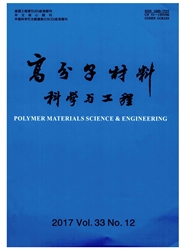

 中文摘要:
中文摘要:
充模结束后的保压、冷却过程中,塑料熔体与凝固区域并存,对处于不同温度的塑料材料,分别采用可压缩粘性模型、线形粘弹性模型与弹性模型,建立了充模后的三维两相耦合计算模型及翘曲计算模型,模拟了热残余应力、收缩变形的演变过程。数值算例表明,耦合计算模型的模拟结果与实验结果在制品厚度部分区域较好地吻合,能模拟不同工艺条件对热残余应力与收缩的影响。
 英文摘要:
英文摘要:
Residual thermal stress and shrinkage are very important properties of plastic injection part,which vary with different material processing parameters. After mould cavity is filled,melt region coexists and interacts with solidified region during packing and cooling stages. Compressible viscosity model,linear viscoelastic model and elastic model were separately applied to model plastic material of regions with different temperature. Then three-dimensional two-phase coupling model and warpage model were built for simulating the evolution of residual thermal stress and shrinkage. Numerical examples were presented. The results show that the simulated results agree well with the experimental results on the some region along the thickness direction. Residual thermal stress and shrinkage resulting from different processing parameters were simulated. It is found that the parameters mutually interact,leading to complex variety of residual thermal stress and shrinkage.
 同期刊论文项目
同期刊论文项目
 同项目期刊论文
同项目期刊论文
 期刊信息
期刊信息
